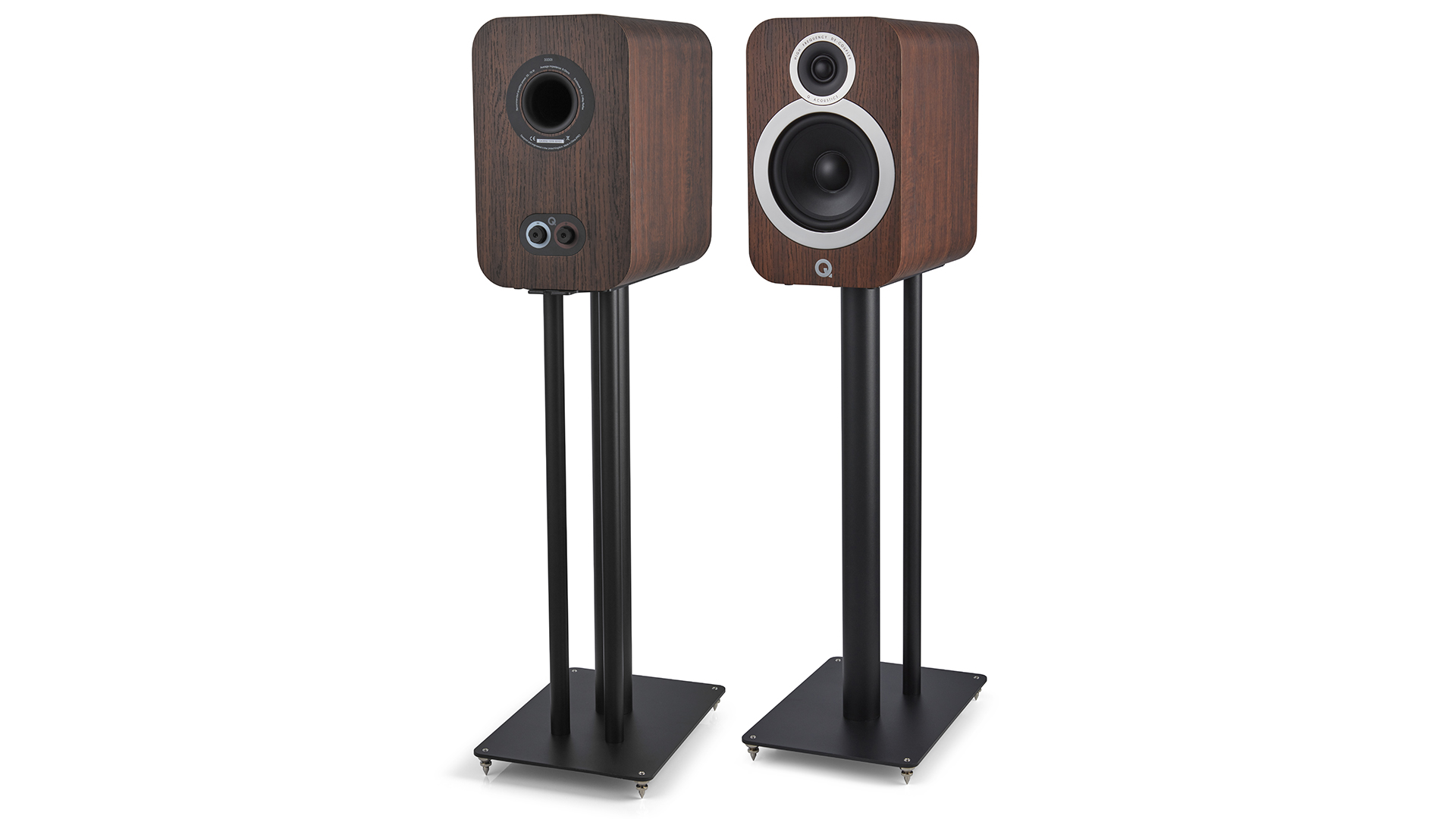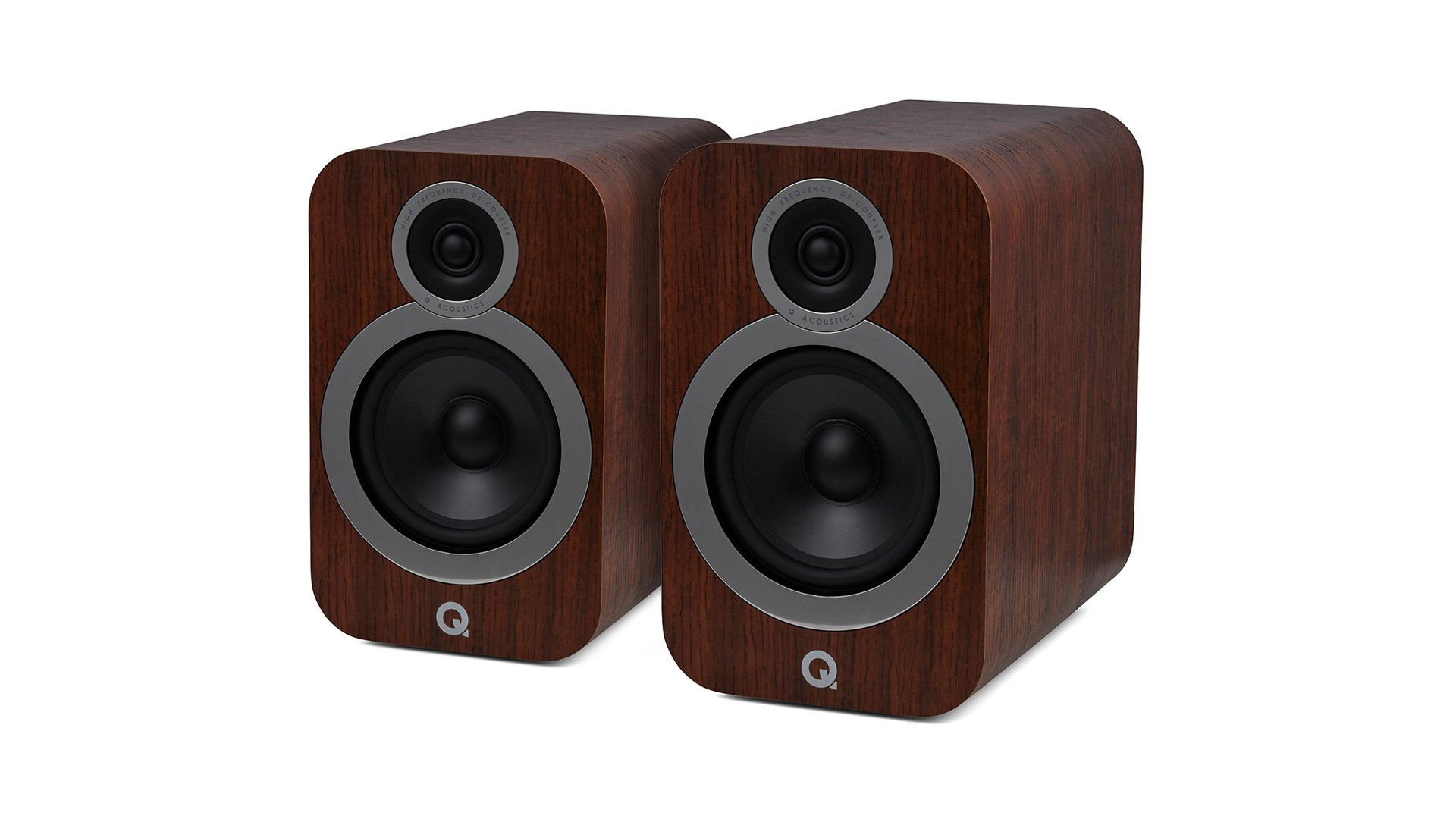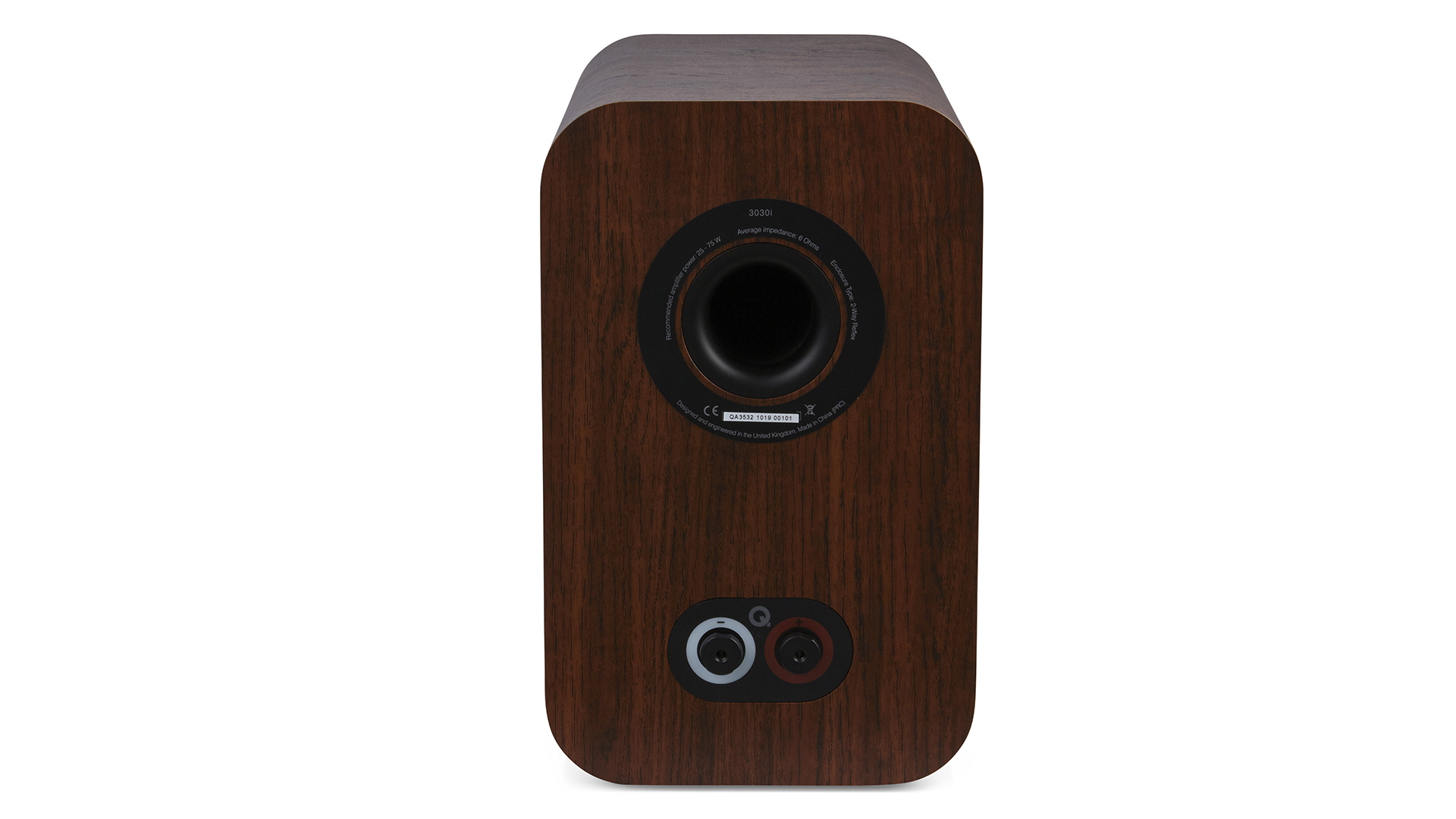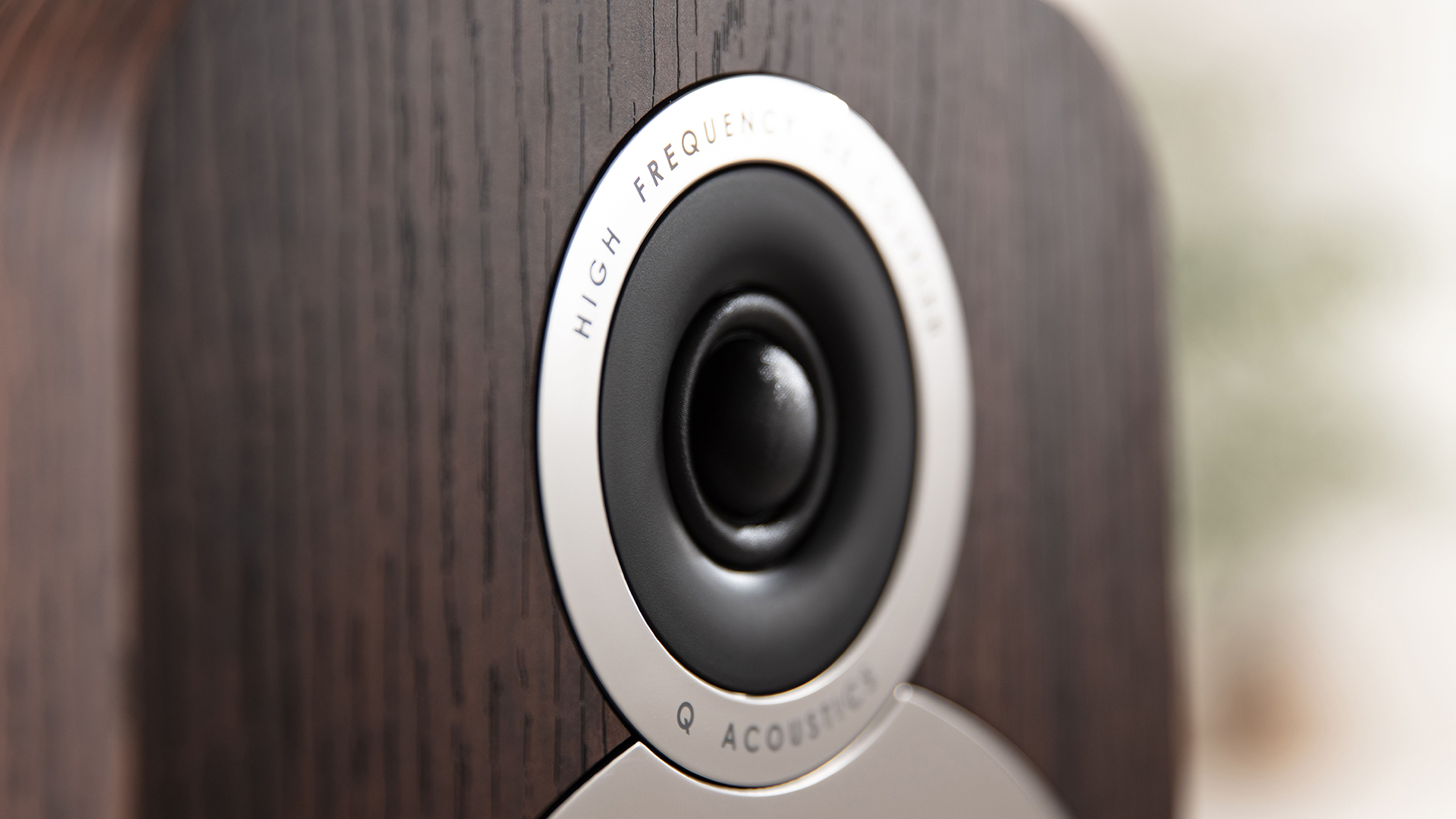What Hi-Fi? Verdict
The 3030is are yet another excellent speaker from Q Acoustics. They deserve a place on the shortlist
Pros
- +
Insightful and expressive
- +
Impressive, well-integrated bass
- +
Fine build
Cons
- -
Tough competition
Why you can trust What Hi-Fi?
UPDATE: The Q Acoustics 3030i speakers have been replaced by the 3000c series. The older model is still available and you can scroll down to read our original review, but we recommend that you also check out our Q Acoustics 3020c review and our guide to the best speakers available right now.
Back in 2018, Q Acoustics launched its excellent 3000i speaker range. It appeared fully formed with multiple standmounter options, a large tower and dedicated home cinema offerings. Now, surprisingly and with little warning, we have another model in the form of the 3030i.
The Q Acoustics 3030is are now the largest of the three standmounters in the range and, with all the current models already having gained five-star reviews, they have quite a legacy to uphold.
Build

It comes as no shock to find that Q Acoustics has stuck closely to its successful recipe for the 3030is, merely adding a larger mid/bass unit and a more generous cabinet.
With the speaker’s enclosure packing 12.5 litres of volume – more than double that of the 3020is (6.1 litres) – the larger mid/bass driver and cabinet bode well for bass extension, dynamic reach and the ability to play more loudly.

Enclosure type 2-way reflex
Bass unit 16.5cm
Treble unit 22mm
Frequency response 46Hz – 30kHz
Impedance 6 ohms
Sensitivity 88dB
Dimensions (hwd) 32.5 x 20 x 33cm
The 3030i’s 16.5cm mid/bass (up from 12.5cm in the junior model) is actually based on the one used in the 3050i floorstanders, but tweaked to work in this installation. It hands over to a 22mm dome tweeter at 2.4kHz.
This tweeter is shared throughout the range and is a pleasingly detailed and refined unit. Here, though, it is decoupled from the front panel to provide isolation from the vibrations generated by the mid/bass unit, which helps improve detail and focus.
The cabinet keeps the 3000i series family appearance, so much so that some may struggle to differentiate between the various standmounters of the range from a photograph.
It’s relatively deep, to give that extra volume, so if space is at a premium you may wish to look at the smaller models instead. As with the other speakers in the range, the enclosure is internally braced for rigidity and carefully damped to minimise any enclosure resonances.
Compatibility

The rear-firing port means it’s best to leave a little room between the rear of the speaker and the wall behind it, to allow the port to work properly.
We play around with positioning and find the 3030is to be refreshingly unfussy. In our test room, they sound best when placed around 40cm out into the room, but remain pretty balanced even when much closer. A little toe-in towards the listening position helps solidify the stereo image, but the exact angle doesn’t prove too critical.
Speakers at this level have to be able to work with a wide range of equipment. They need to be easy to drive so that even a micro-system, such as Denon’s D-M41DAB, can cope and have enough in the way of smoothness to sound good with low-bitrate music streams.
Yet, given suitably talented electronics, such as Rega’s Brio with a partnering Planar 3 turntable or Marantz’s 6006 series CD player and amplifier, these speakers have to be able to shine.
Sound

Give these boxes a few days to settle and they produce a sound that’s familiar yet surprisingly muscular compared to other 3000i series standmounters. Like the others in the range, these are impressively cohesive performers with a smooth tonal balance and easy-going nature.
Rivals such as Dali’s Oberon 1s or B&W’s 607s may deliver a more vivid and exciting sound, but the Qs counter that with a balanced, slightly understated but always engaging performance.
We listen to Tchaikovsky’s Marché Slave Op.31 and the 3030is respond with a large-scale sound packed with authority. The promised bass heft is delivered, with the speakers delivering plenty of weight to the low-end. Pleasingly, this extra dose of bass is well integrated and nicely controlled.
We can’t help but enjoy the way these boxes track the music’s roller-coaster dynamics and their composure when pushed hard. They work more comfortably at high volumes than we’d expect for a product of this price too.
Switching to Massive Attack’s Heligoland, we admire the 3030is’ ability to follow multiple instrumental strands and the way they render low level sounds in a busy mix. These are impressively detailed performers but they present that information in a coherent and unforced way.
They’re rhythmic and able to convey the changing momentum of a piece of music well. It all makes for a hugely rewarding listening experience; one that had us playing track after track long after the test session ended.
Verdict
The 3030is are a welcome addition to the 3000i range. They have all the attributes of their smaller siblings, but add a huge slice of authority into the proceedings. Simply put, you can buy these with confidence.
SCORES
- Sound 5
- Compatibility 5
- Build 5
MORE:
Best budget hi-fi speakers 2020
Read our Q Acoustics 3050i review
Read our Dali’s Oberon 1 review
Read our B&W’s 607 review
What Hi-Fi?, founded in 1976, is the world's leading independent guide to buying and owning hi-fi and home entertainment products. Our comprehensive tests help you buy the very best for your money, with our advice sections giving you step-by-step information on how to get even more from your music and movies. Everything is tested by our dedicated team of in-house reviewers in our custom-built test rooms in London, Reading and Bath. Our coveted five-star rating and Awards are recognised all over the world as the ultimate seal of approval, so you can buy with absolute confidence.
-
Markmaguire I was just about to buy the 3050i when these were announced a few months ago. Was eagerly anticipating the What HiFi review for comparison. How do they compare to the larger floor standers ad part of a 5.1 system?Reply -
Mr. C Nation I have always been a bit puzzled by speakers like these, as standmounts. They don't take up any less room, on stands, than floor standers. The Atacama stands that these look to perched on - the Atacamas are a 5* stand, at any rate - are £120 at Richer Sounds and elsewhere.Reply
Total price £419 from R. S. - the same price as a pr of Fyne Audios 302's. Oberon 5's @ £499. Q Acoustics 3050 @ £349.
Unless floor space is an issue and these speakers must go on shelves - they used to be called 'bookshelf', this sort of speaker - why lose the bottom end that only volume can give?
And the performance if placed on a shelf is almost certainly going to be inferior to stand-mount. Back to sq 1.
As my guitar guru says, why buy a two pick-up guitar - 2/3rds of a guitar - when you can buy a Strat? -
Flinty ReplyMr. C Nation said:I have always been a bit puzzled by speakers like these, as standmounts. They don't take up any less room, on stands, than floor standers. The Atacama stands that these look to perched on - the Atacamas are a 5* stand, at any rate - are £120 at Richer Sounds
Haven't you heard of the 'Wife Acceptance Factor'? -
Nij1 Reply
Surely the issue is the size of the room. I live in an apartment with a fairly small living room and found floorstanders overwhelming which meant I had to play them at low volumes in order not to upset the neighbours. It meant they could never really ‘sing’. Smaller speakers means you can turn them up and really hear what they can do.Mr. C Nation said:I have always been a bit puzzled by speakers like these, as standmounts. They don't take up any less room, on stands, than floor standers. The Atacama stands that these look to perched on - the Atacamas are a 5* stand, at any rate - are £120 at Richer Sounds and elsewhere.
Total price £419 from R. S. - the same price as a pr of Fyne Audios 302's. Oberon 5's @ £499. Q Acoustics 3050 @ £349.
Unless floor space is an issue and these speakers must go on shelves - they used to be called 'bookshelf', this sort of speaker - why lose the bottom end that only volume can give?
And the performance if placed on a shelf is almost certainly going to be inferior to stand-mount. Back to sq 1.
As my guitar guru says, why buy a two pick-up guitar - 2/3rds of a guitar - when you can buy a Strat? -
Mr. C Nation Reply
That's a very fair point. Never had that problem - well, not since flat share/bedsit 50 years ago 😄Nij1 said:Surely the issue is the size of the room. I live in an apartment with a fairly small living room and found floorstanders overwhelming which meant I had to play them at low volumes in order not to upset the neighbours. It meant they could never really ‘sing’. Smaller speakers means you can turn them up and really hear what they can do. -
Mr. C Nation Reply
I have heard of it. Despite efforts to remedy this omission, never had the problem. And the g/fs along the way have usually appreciated the sound quality, without being aware of the reasons. I remember one saying "Wow! It's like you're there!" It was a Haydn symphony, as I recall.Flinty said: -
Yann Reply
Hi, have you any response to your question? I have same questionVasile Burghel said:Is the pairing of q acoustic 3030i with marantz pm 6006 good? -
the parrys I have owned Concept 20s and 3050i 2050i 2020i , i now prefer 3030i over all above, i found the Concept 20s lacking in bass but not clarity so were not 100% , the 3050i just sounded boring flat sounding safe no sparkle, the 3030i just play everything right and fun to listen to, even badly recorded tracks sound good on these babies, also great for streaming music and mould well as fronts for AV Set up, they look fantastic, they have excellent bass extension and weight for bookshelf one of best i have listened to for this size, i have loads of speakers and i always put these back in main system (for now) just like the overall sound Q acoustics have nailed it, treble not so harsh either neither are mids, i found mids nasty on the early 2020i so good improvement overall, these are good quality stand mounts that wont break the bank and not fussy and play on any system, you can put anywhere in any room in your house and still sound great out the box, and play well with all types of music, these could be the speakers for you.Reply -
Stevy68 Reply
Just ordered a pair to replace my Towers and Studio Monitors. These seem like a fine hybrid of both. One thing about Towers is that the height is fixed but with a bookshelf like this one and an adjustable stand I can add a little height to the soundstage that I could not do with any floorstander and sometimes found that I wish I could. I ordered the Graphite Grey out of preference over the fake wood look. Preferably in regards to aesthetics I wish Q Acoustics went with a matte finish on the cone ring especially on the Walnut where either a Matte Black or Grey would have been more my cup of Earls but nevertheless, just cosmetics. Looking forward to that bass but then I have just returned a pair of JBL 305p mk2 due to a fault internally and for they money those speakers and near impossible to better….the parrys said:I have owned Concept 20s and 3050i 2050i 2020i , i now prefer 3030i over all above, i found the Concept 20s lacking in bass but not clarity so were not 100% , the 3050i just sounded boring flat sounding safe no sparkle, the 3030i just play everything right and fun to listen to, even badly recorded tracks sound good on these babies, also great for streaming music and mould well as fronts for AV Set up, they look fantastic, they have excellent bass extension and weight for bookshelf one of best i have listened to for this size, i have loads of speakers and i always put these back in main system (for now) just like the overall sound Q acoustics have nailed it, treble not so harsh either neither are mids, i found mids nasty on the early 2020i so good improvement overall, these are good quality stand mounts that wont break the bank and not fussy and play on any system, you can put anywhere in any room in your house and still sound great out the box, and play well with all types of music, these could be the speakers for you.

